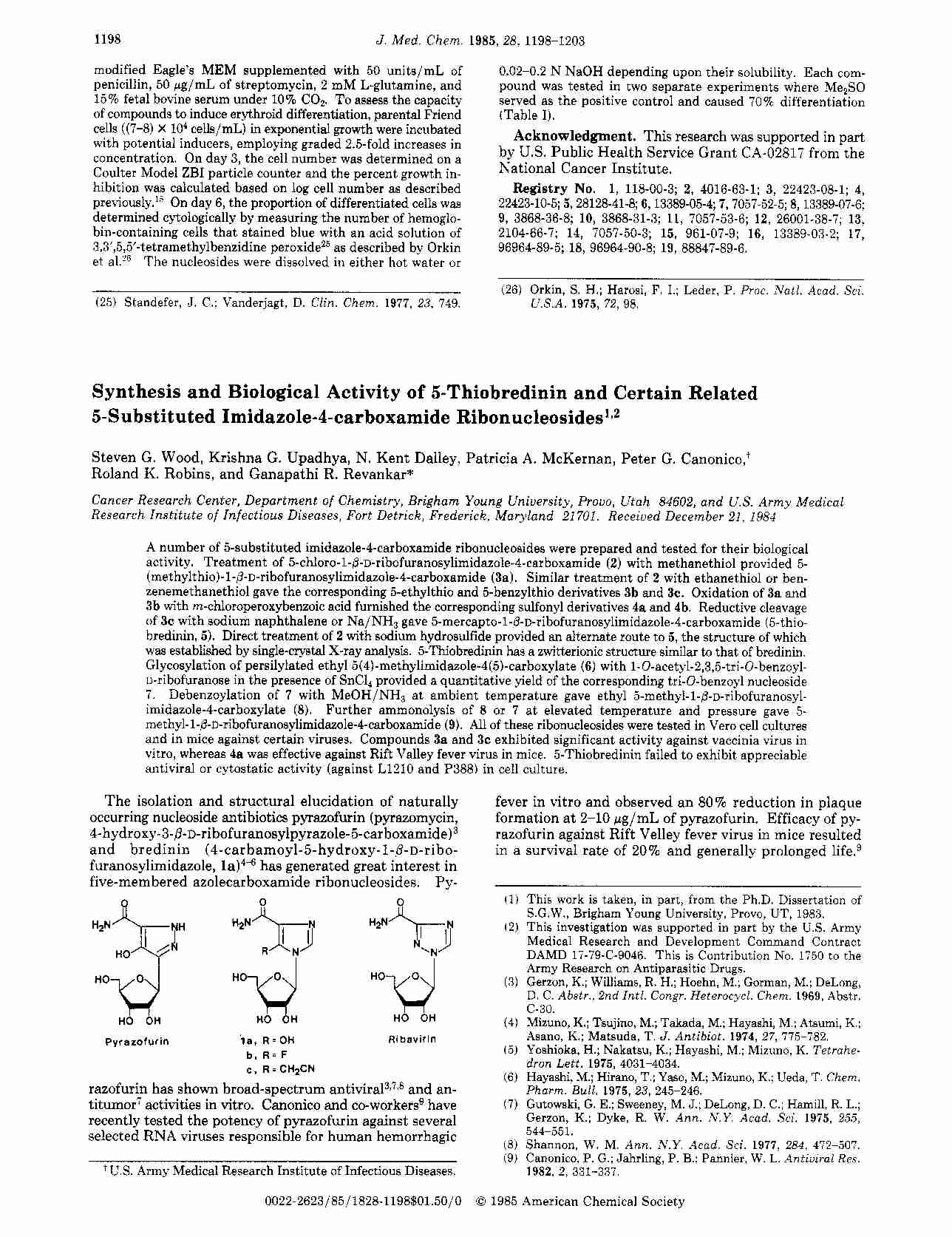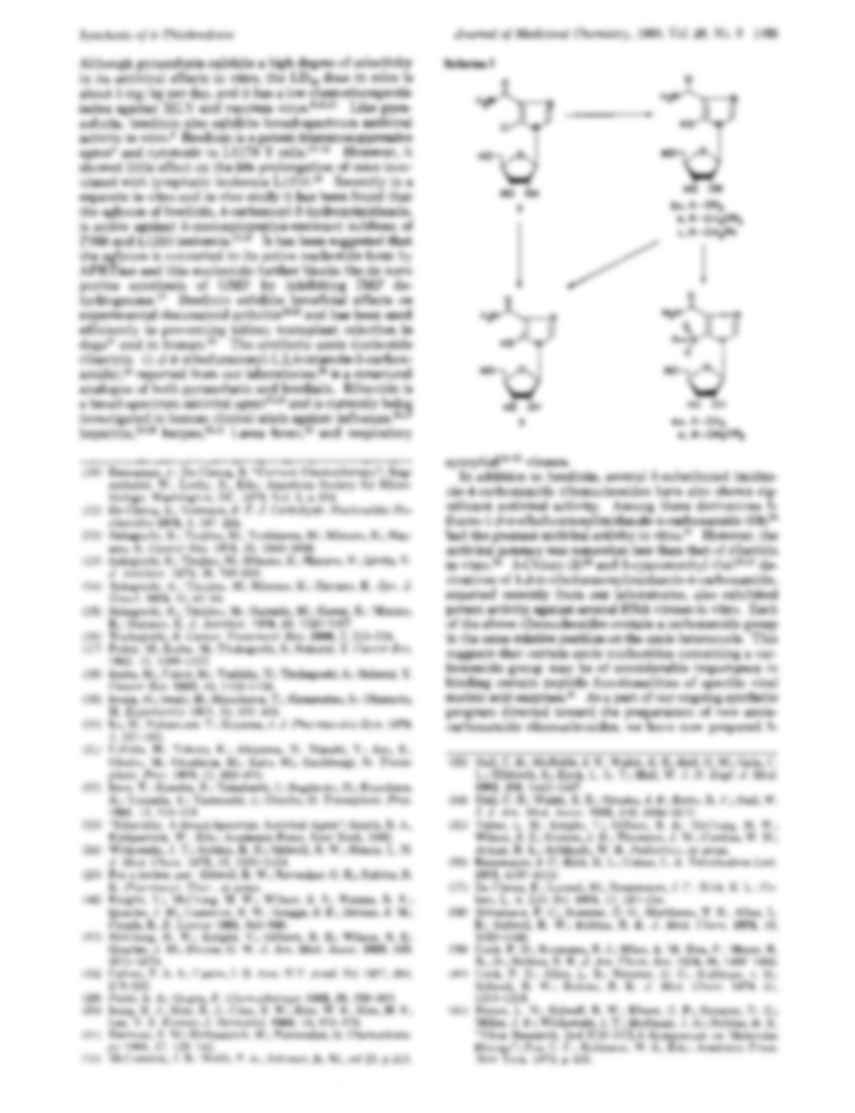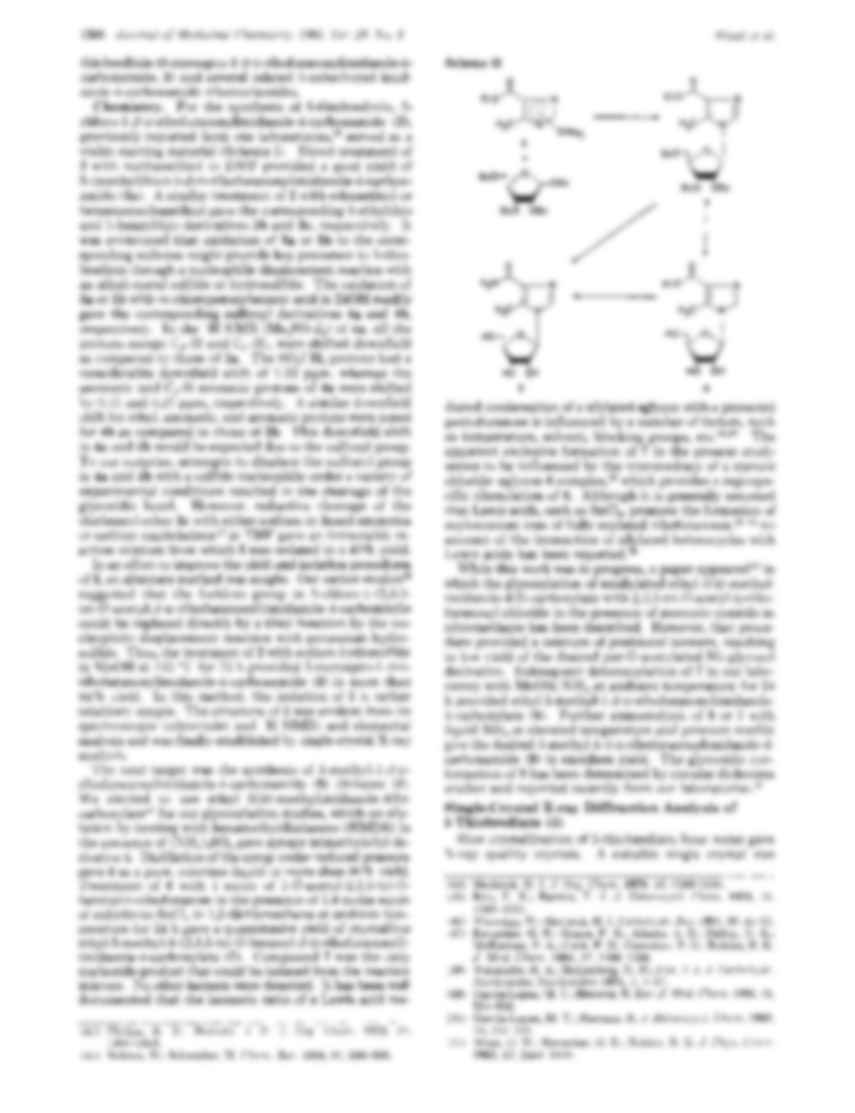J . Med. Chem. 1 9 8 5 , 2 8 , 1198-1203
1198
modified Eagle's MEM supplemented with 50 units/mL of
penicillin, 50 fig/mL of streptomycin, 2 mM L-glutamine, and
15% fetal bovine serum under 10% C02. To assess the capacity
of compounds to induce erythroid differentiation, parental Friend
cells ((7-8) X lo4 c e h / m L ) in exponential growth were incubated
with potential inducers, employing graded 2.5-fold increases in
concentration. On day 3, the cell number was determined on a
Coulter Model ZBI particle counter and the percent growth inhibition was calculated based on log cell number as described
previou~ly.'~ day 6, the proportion of differentiated cells was
On
determined cytologically by measuring the number of hemoglobin-containing cells that stained blue with an acid solution of
3,3',5,5'-tetramethylbenzidine
peroxide25 as described by Orkin
et al.26 The nucleosides were dissolved in either hot water or
(25) Standefer, J. C.; Vanderjagt, D. Clin. Chem. 1977, 23, 749.
0.02-0.2 N NaOH depending upon their solubility. Each compound was tested in two separate experiments where Me,SO
served as the positive control and caused 70% differentiation
(Table I).
Acknowledgment. This research w s supported in part
a
by US.Public Health Service Grant CA-02817 from the
National Cancer Institute.
Registry No. 1, 118-00-3; 2, 4016-63-1; 3, 22423-08-1; 4,
22423-10-5; 5,28128-41-8;6,13389-05-4;7,7057-52-5;8,13389-07-6;
9, 3868-36-8; 10, 3868-31-3; 11, 7057-53-6; 12, 26001-38-7; 13,
2104-66-7; 14, 7057-50-3; 15, 961-07-9; 16, 13389-03-2; 17,
96964-89-5; 18, 96964-90-8; 19, 88847-89-6.
(26) Orkin, S. H.; Harosi, F. I.; Leder, P. Proc. Natl. Acad. Sci.
U.S.A. 1975, 72, 98.
Synthesis and Biological Activity of 5-Thiobredinin and Certain Related
5-Substituted Imidazole-4-carboxamideRibonucleosides1*2
Steven G. Wood, Krishna G. Upadhya, N. Kent Dalley, Patricia A. McKernan, Peter G. Canonico,'
Roland K. Robins, and Ganapathi R. Revankar*
Cancer Research Center, Department of Chemistry, Brigham Young University, Provo, U t a h 84602, and U S . Army Medical
Research Institute of Infectious Diseases, Fort Detrick, Frederick, Maryland 21 701. Received December 21, 1984
A number of 5-substituted imidazole-4-carboxamide ribonucleosides were prepared and tested for their biological
activity. Treatment of 5-chloro-l-~-~-ribofuranosylimidazole-4-carboxamide
(2) with methanethiol provided 5(methylthio)-l-~-~-ribofuranosylimidazole-4-carboxamide Similar treatment of 2 with ethanethiol or ben(3a).
zenemethanethiol gave the corresponding 5-ethylthio and 5-benzylthio derivatives 3b and 3c. Oxidation of 3a and
3b with m-chloroperoxybenzoic acid furnished the corresponding sulfonyl derivatives 4a and 4b. Reductive cleavage
of 3c with sodium naphthalene or Na/NH3 gave 5-mercapto-l-~-~-ribofuranosylimidazole-4-carboxamide
(5-thiobredinin, 5). Direct treatment of 2 with sodium hydrosulfide provided an alternate route to 5, the structure of which
was established by single-crystal
... zobacz całą notatkę






Komentarze użytkowników (0)